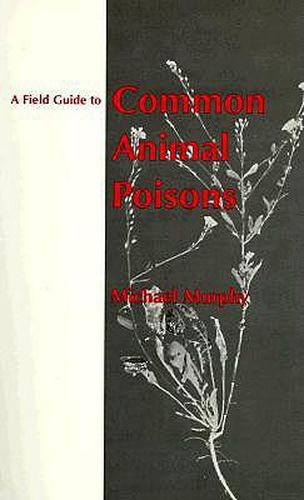Readings Newsletter
Become a Readings Member to make your shopping experience even easier.
Sign in or sign up for free!
You’re not far away from qualifying for FREE standard shipping within Australia
You’ve qualified for FREE standard shipping within Australia
The cart is loading…






This field guide should be useful for veterinary practitioners and veterinary students. Murphy covers all aspects of common animal poisons and provides references for more in-depth research. As a text, the book is designed for teaching applied aspects of veterinary toxicology. Organised for easy reference, A Field Guide to Common Animal Poisons is divided into five major sections. The first section, Prevalence, is further divided into common and uncommon poisons and goes into detail about the former, highlighting the species and physiological systems affected. In section two, Murphy categorises treatment regimes as general, supportive, or specific and also lists therapeutic agents, dosage regimes, and suppliers. In section three he summarises the facts necessary for recognition, diagnosis and treatment of common animal poisons. The fourth section highlights clinical signs, diagnostic test results, and toxin names including common and scientific names for plants. The last section includes lists of colleges of veterinary medicine, accredited veterinary diagnostic laboratories, poison control centres, and drug suppliers.
$9.00 standard shipping within Australia
FREE standard shipping within Australia for orders over $100.00
Express & International shipping calculated at checkout
This field guide should be useful for veterinary practitioners and veterinary students. Murphy covers all aspects of common animal poisons and provides references for more in-depth research. As a text, the book is designed for teaching applied aspects of veterinary toxicology. Organised for easy reference, A Field Guide to Common Animal Poisons is divided into five major sections. The first section, Prevalence, is further divided into common and uncommon poisons and goes into detail about the former, highlighting the species and physiological systems affected. In section two, Murphy categorises treatment regimes as general, supportive, or specific and also lists therapeutic agents, dosage regimes, and suppliers. In section three he summarises the facts necessary for recognition, diagnosis and treatment of common animal poisons. The fourth section highlights clinical signs, diagnostic test results, and toxin names including common and scientific names for plants. The last section includes lists of colleges of veterinary medicine, accredited veterinary diagnostic laboratories, poison control centres, and drug suppliers.